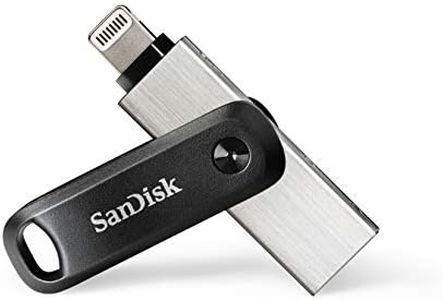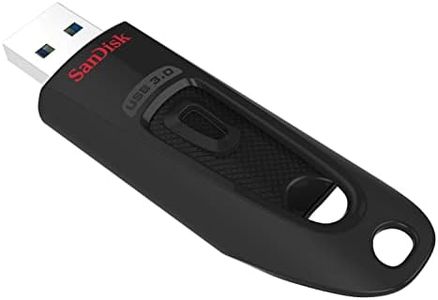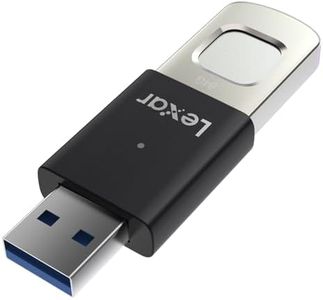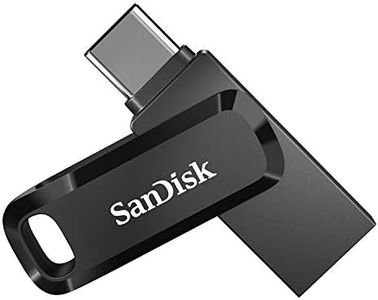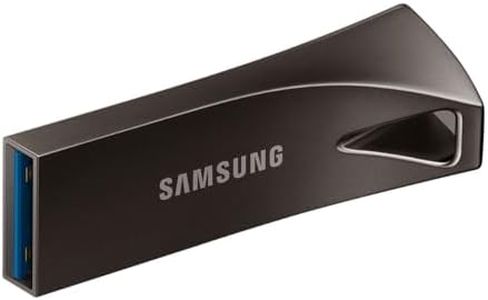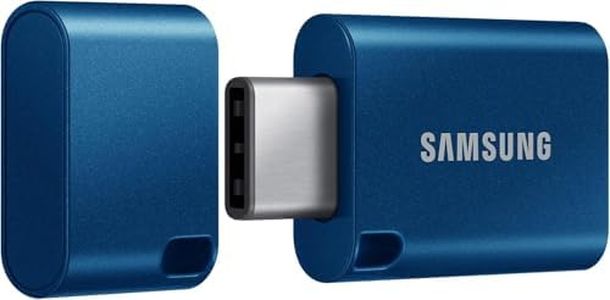We Use CookiesWe use cookies to enhance the security, performance,
functionality and for analytical and promotional activities. By continuing to browse this site you
are agreeing to our privacy policy
10 Best Usb Flash Drives
From leading brands and best sellers available on the web.By clicking on a link to a third party's website, log data is shared with that third party.
Buying Guide for the Best Usb Flash Drives
When it comes to buying a USB flash drive, it's important to consider how you plan to use it—whether transferring documents, storing photos and videos, or running portable apps. The right flash drive will balance speed, size, portability, and reliability. Some features matter more depending on whether you’ll use the drive mostly for work, school, or general use. Focusing on your personal needs will help you choose a flash drive that is both effective and convenient.Storage CapacityStorage capacity refers to how much data the flash drive can hold, measured in gigabytes (GB) or terabytes (TB). This is crucial because it determines how many files, photos, videos, or other data you can store. Smaller sizes like 16GB or 32GB are good for documents and occasional file transfers, while sizes like 64GB, 128GB, or even larger are better for storing lots of photos, videos, or larger files. To pick the right capacity, consider how much data you typically handle. If you’re often moving large files or want to keep a big backup, go bigger. For occasional use or transferring documents, a smaller size will suffice.
Read/Write SpeedThis spec tells you how quickly the flash drive can transfer data to (write) or from (read) another device, usually measured in megabytes per second (MB/s). This matters if you often transfer large files or want to reduce waiting times. USB flash drives can have lower speeds (under 50MB/s), which are fine for basic tasks, mid-range speeds (50–150MB/s) suitable for regular use like photos and documents, or high speeds (over 150MB/s), which are ideal for videos or frequent transfers. If speed is a priority—like for moving big videos—look for higher values, but for lighter everyday use, lower speeds are acceptable.
USB VersionThe USB version (like USB 2.0, 3.0, 3.1, or 3.2) indicates how modern and fast the connection is. Newer versions offer faster data transfer and better compatibility with newer devices. USB 2.0 is slower and best for basic use. USB 3.0 and beyond offer much faster performance. Make sure your computer or device supports the version to get the most benefit—if you have a USB 3.1 port, choosing a drive with the same or a newer version will give you faster data rates.
Physical Size and DesignThe physical size and shape can impact portability and convenience. Some flash drives are ultra-compact and easy to keep on a keychain, while others are larger with added features like sliding connectors or covers for protection. If you travel a lot or want to avoid losing your drive, a smaller, sturdy design is best. On the other hand, larger designs might offer better durability or special features, but can be bulkier. Choose a design that fits your lifestyle and where you plan to carry it.
Durability and Build QualityDurability refers to how well the flash drive can withstand drops, water, dust, or daily wear and tear. Drives with solid metal cases or protective features are generally better for people who might subject the drive to rough conditions—like carrying it in a bag or pocket. If you’re using the drive at a desk or home, basic plastic designs may be sufficient. Think about whether it needs to survive harsh environments when making your choice.
Security FeaturesSome flash drives offer built-in security like password protection, hardware encryption, or fingerprint readers. These can help keep sensitive files safe from unauthorized access. If you’ll be storing confidential information (like work documents or personal data), look for these features. If you’re only saving non-sensitive files, basic drives without security are fine.
CompatibilityCompatibility refers to whether the flash drive can work with different operating systems or devices. Most USB drives work across Windows, Mac, and Linux, but the formatting type also matters (like FAT32 or exFAT). If you need to use the drive with multiple types of devices—including TVs, cameras, or smartphones—make sure the drive supports appropriate formats and adapters.

